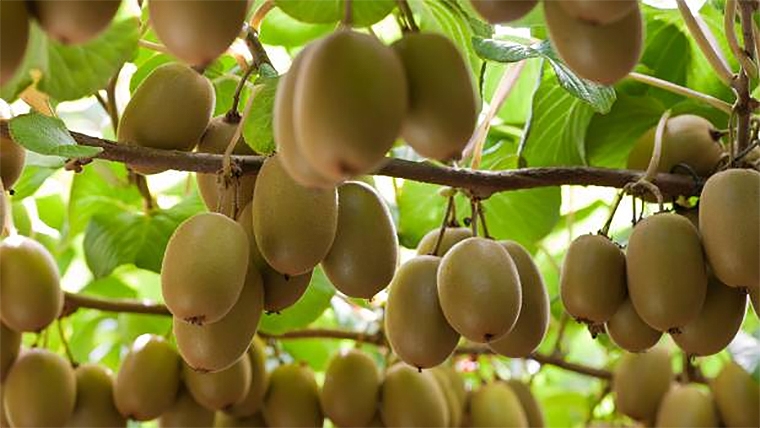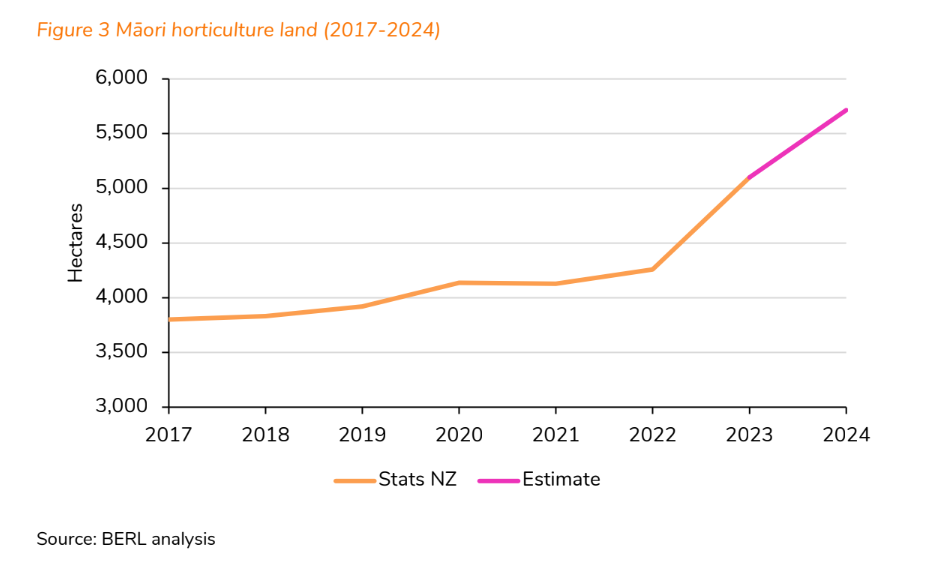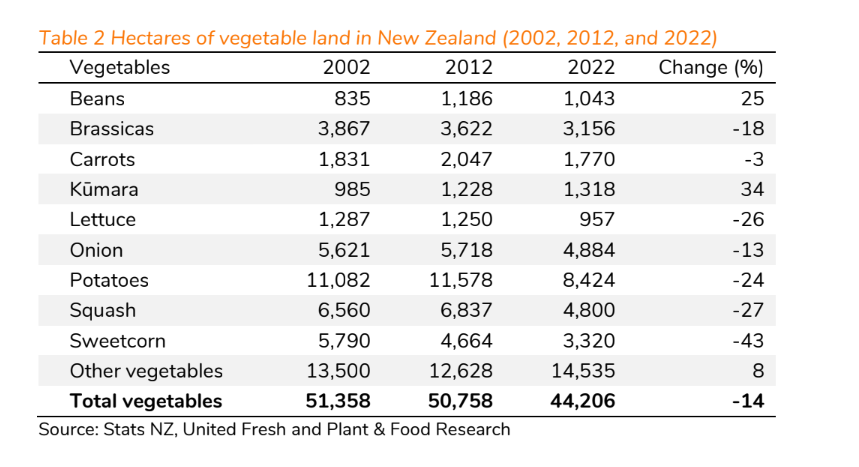
Increasing amounts of Māori land are being used for growing fruit and vegetables at a time when the overall land area available for this sector is shrinking.
This is the finding of a report by Business and Economic Research Limited (BERL), which was commissioned by Horticulture New Zealand (HortNZ).
Called “A Snapshot of Māori in Horticulture 2024”, it found the gross output from Māori horticulture last year was worth $305 million, up from $220.5 million in 2019.

It concedes just 1% of all Māori land comprises horticulture, and the Māori share of the total horticulture industry is still just 7% - slightly under half the Māori share of the population.
But Māori production is still half as big again as it was in 2017.
HortNZ says this process matches one of the key priorities of its own Aotearoa Horticulture Action Plan.
“Currently, Māori entities have large tracts of pastoral and forestry land, with a smaller proportion of land in horticulture,” says the chief executive of HortNZ, Kate Scott.
“There is an ongoing drive to transition suitable land to horticulture, as the opportunity arises, due to its relatively high value compared to more traditional agriculture uses.
“This shift to horticulture offers economic advantages for Māori landowners, generating employment and overall increased land value compared to alternative uses of the land.”
The BERL report finds Māori do best in kiwifruit, owning 12.2 % of kiwifruit land. They also do well in onions, with 10.5% of onion land.
Other crops include apples, citrus, nuts, squash, potatoes and other vegetables. There are over 3,000 Māori employees in the sector, 13% of the total workforce.
Māori progress in horticulture is taking place as horticulture booms but faces significant restraints, according to the BERL report.
“The horticulture industry now injects almost $4.65 billion per year into New Zealand through exports, while wine returns another $2.4 billion per year.”
However, this is being achieved against growing land use constraints.
In the last two decades, there have been slight falls in the amount of land available for fruit growing and significant drops in the amount of land available for vegetables.

“It is likely that multiple factors have contributed to this trend,” BERL says.
“But one documented factor has been urban expansion reducing the availability of versatile productive land. In addition, vegetable crops are more vulnerable to weather changes than trees. For example, they can be subject to crop destruction and droughts”
“Other reasons include the regulatory burden, which increases operational costs for vegetable growers.”
These comments follow repeated calls from HortNZ for the Government to make vegetable growing easier.
“To ensure continued supply and affordability, vegetable production must be prioritised. (The Government) must provide clearer direction on human health priorities, including vegetable production, to ensure councils apply consistent public-good priorities,” HortNZ said in a recent media statement.
“Legislation should allow both existing and new vegetable production as a permitted activity within a freshwater farm plan -- vegetable farming should not require a consent.”

We welcome your comments below. If you are not already registered, please register to comment.
Remember we welcome robust, respectful and insightful debate. We don't welcome abusive or defamatory comments and will de-register those repeatedly making such comments. Our current comment policy is here.